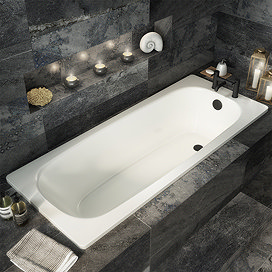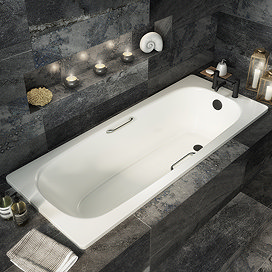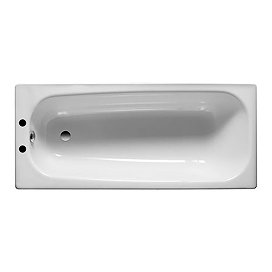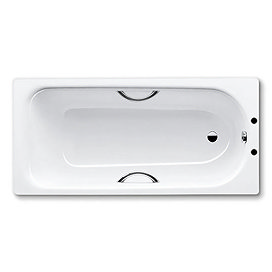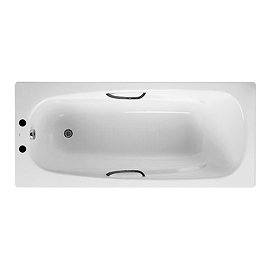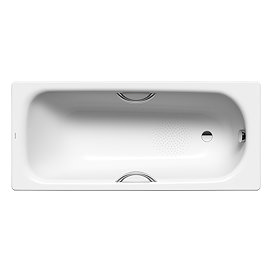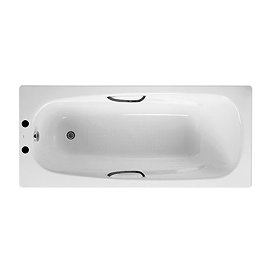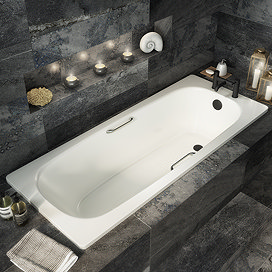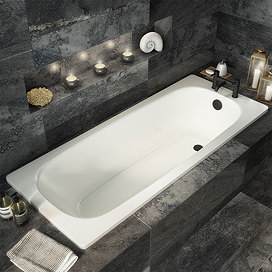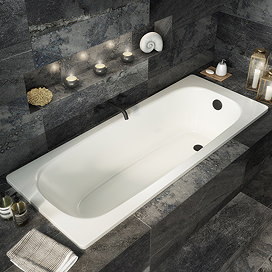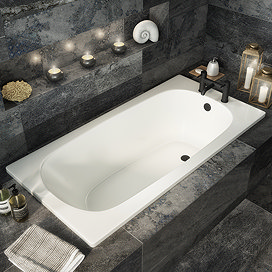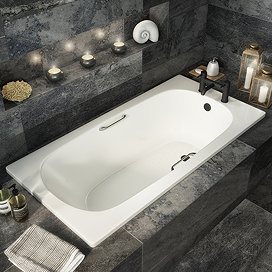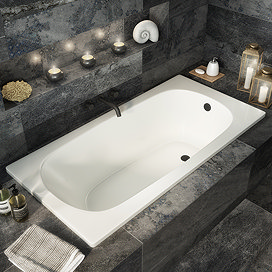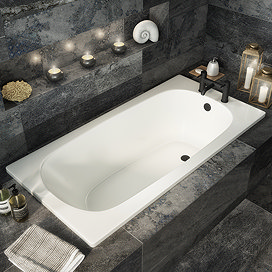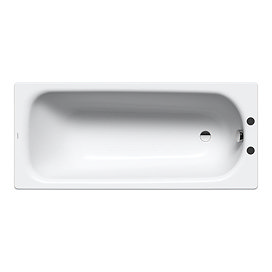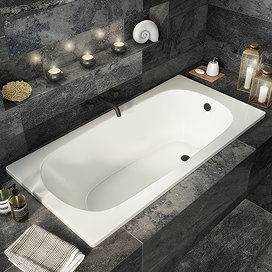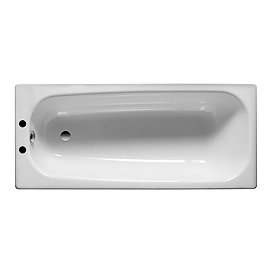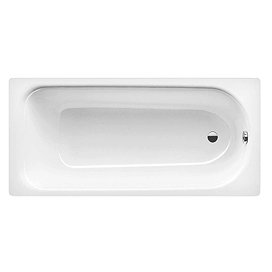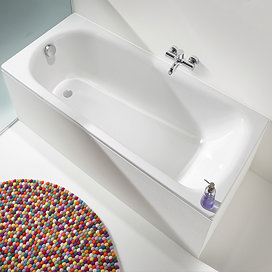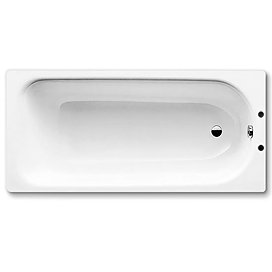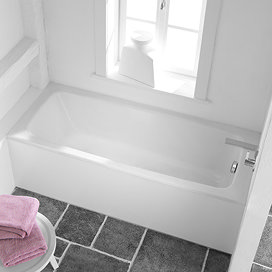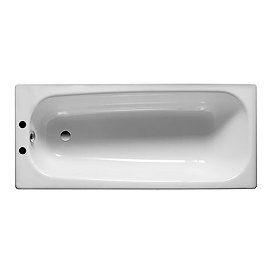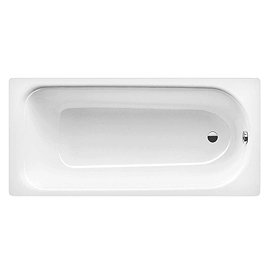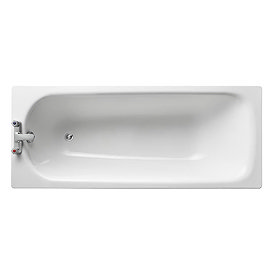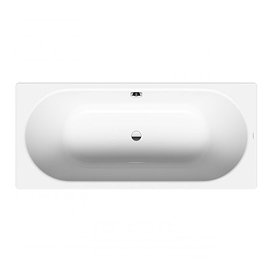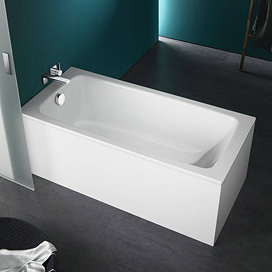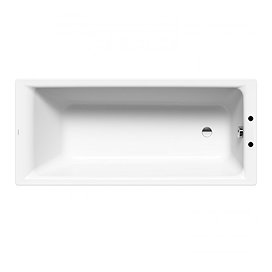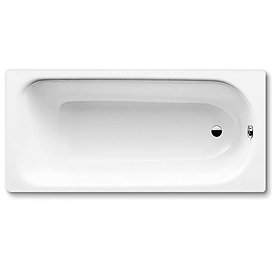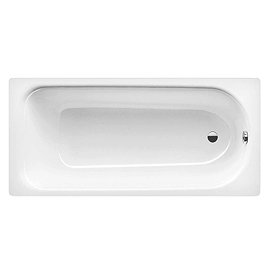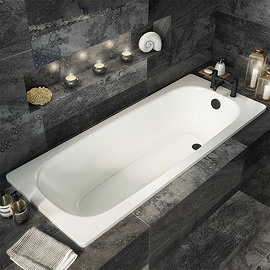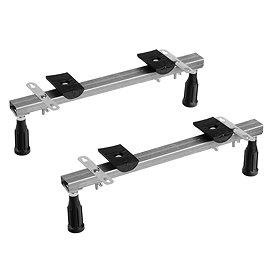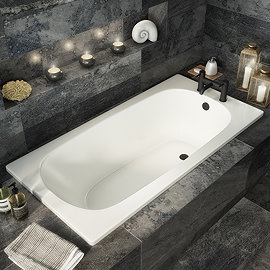Steel enamel baths are a solid choice if you want something that feels sturdy underfoot and stays looking good for years. These FAQs bring together the things customers ask us most, along with the tips we hear every day from installers.
What is a steel enamel bath?
A steel enamel bath has a tough steel core coated in a smooth enamel finish. The steel gives it strength and the enamel gives it that polished surface that is easy to clean. If you have ever had an acrylic bath flex under you, you will feel the difference as soon as you step into steel.
Steel enamel holds heat well and stays hygienic because it is non-porous. It will not trap bacteria and it does not need anything more than gentle cleaners. The only thing to watch is heavy knocks because enamel can chip.
What is the difference between cast iron and steel bathtubs?
Cast iron baths are the heavyweight option. They are extremely solid, slow to warm and brilliant at holding heat for a long time. Steel, on the other hand, is lighter, quicker to warm and easier to handle during installation.
Both are durable but in different ways. Steel can chip if something sharp is dropped. Cast iron is tougher but much more challenging to manoeuvre or repair.
Many premium steel baths, including those from Kaldewei, use titanium-reinforced steel. This gives you extra strength without the sheer weight of cast iron.
Do steel baths feel more solid and retain heat better than acrylic?
Yes. Steel baths do not flex or creak which gives you a proper solid underfoot feel. Heat retention is similar on paper but many users tell us their steel baths stay warm a little longer than acrylic baths because the metal absorbs and releases heat back into the water.
Are steel baths heavy?
They are heavier than acrylic but nowhere near as heavy as cast iron. Most homes handle them easily.
Larger steel baths often need an extra pair of hands to move safely. They are rigid so you cannot bend them around awkward spaces. Most people carry them upright through tight spots and rotate them once inside the bathroom. Just make sure that you measure narrow areas in advance; stair turns and small landings are the main places where people run into trouble.
Do steel baths need floor reinforcement?
Most modern floors will not need any extra work. Older timber floors sometimes need a joiner to reinforce the joists, especially for wider or deeper models. Fitters often add a couple of noggins under an older bathroom floor.
Are steel baths good for family bathrooms?
Yes. Steel does not flex, stain or scratch easily which makes it perfect for kids, pets and busy homes. Many steel enamel baths include anti-slip options or built-in grips for extra safety.
Are steel baths slippery?
Any enamel surface can feel slippery when wet. Many steel baths come with a factory anti-slip texture. Otherwise a good bath mat works well. Rinsing away soap residue also helps keep things safer, as soap scum is the main cause of slipperiness rather than the enamel itself.
Can I use a steel bath as a shower bath?
A standard rectangular steel bath works very well for showering. Choose one with enough width and a flat internal base. Add a reliable bath screen and use an anti-slip mat if needed.
Are P shaped or L shaped steel baths available?
Not really. Steel is not flexible enough to form those curved shapes. Most P shaped and L shaped shower baths are acrylic.
Do steel baths need extra insulation?
They do not require it but insulation can help with heat retention and noise. Fitters often pack fibreglass insulation around the bath or apply spray foam or damping strips underneath. Insulating the underside in this way also softens the sound of running water, which is handy in flats or family homes.
How long should a steel bathtub last?
With sensible care, twenty years or more is completely realistic. The enamel is tough and stays bright for a very long time. The main thing to avoid is dropping heavy objects. Keep the enamel intact and your steel bath will stay looking great for decades.
Can the enamel be repaired if it chips?
Yes. Small chips can be fixed with repair kits. Larger cosmetic wear can be resurfaced professionally.
